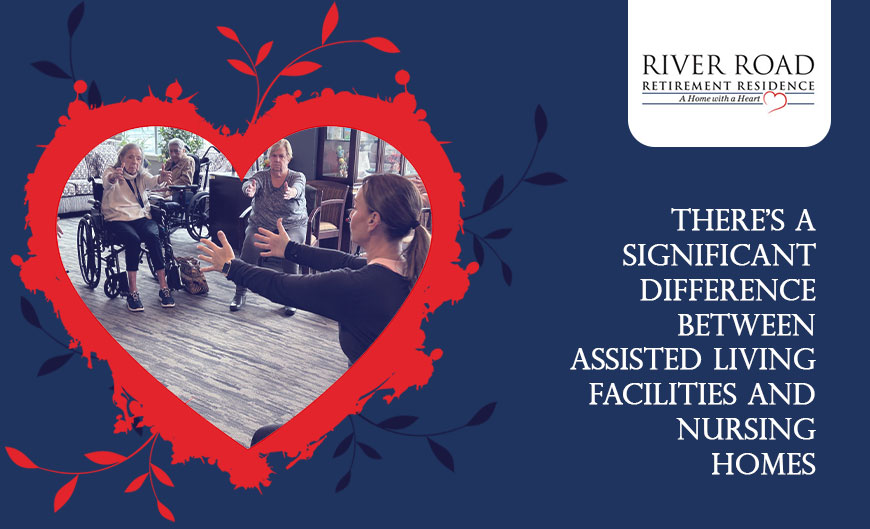Retirement Assisted Living: 7 Myths Debunked
Many Canadians approaching retirement age, or those with aging parents, face important decisions about their future living arrangements. When independent living becomes challenging, senior assisted living communities offer a valuable solution that balances independence with necessary support.
However, misconceptions about these facilities often create unnecessary fears and hesitation.
In this comprehensive guide, we’ll explore the reality of retirement assisted living in Canada. We will also debunk common myths that might be holding you or your loved ones back from making an informed decision.
Understanding Your Options for Elderly Care and Housing
Retirement assisted living represents a middle ground in the spectrum of senior care options. These communities are designed for older adults who need some assistance with daily activities but don’t require the intensive medical care provided in nursing homes. Here are some common myths surrounding the topic.
Myth 1: Assisted Living Means Losing Your Independence
Reality: One of the most persistent misconceptions about retirement assisted living is that moving to such a facility means surrendering your independence. In truth, these communities are specifically designed to preserve the independence of residents while providing support where needed.
Many elderly care and housing options in Canada operate on a tailored care approach. Residents receive assistance only with tasks they struggle with, while maintaining complete autonomy in other aspects of their lives. Modern assisted living facilities often feature private apartments with kitchenettes, allowing residents to cook when they wish or join community meals when preferred.
Myth 2: Assisted Living Is Just Like a Nursing Home
Reality: There’s a significant difference between assisted living facilities and nursing homes. Nursing homes provide comprehensive medical care for those with serious health conditions or severe mobility limitations. In contrast, senior assisted living communities focus on supporting day-to-day living while promoting an active lifestyle.
Independent and assisted living facilities typically offer a much more home-like environment with private living spaces, whereas nursing homes might have shared rooms and a more clinical atmosphere. The level of medical supervision also differs substantially, with assisted living offering basic health monitoring rather than constant medical attention.\
Myth 3: Assisted Living Is Too Expensive
Reality: While cost is certainly a consideration, many Canadians are surprised to learn about the various financial options available for retirement assisted living. When comparing costs, it’s important to consider what’s included in the monthly fee—typically housing, utilities, meals, housekeeping, maintenance, transportation, and activities. These are services that would otherwise need to be paid for separately.
In Canada, provincial health plans may cover certain aspects of care, and many facilities offer tiered pricing based on the level of assistance required. Some insurance policies also provide coverage for long-term care. Additionally, when factoring in the cost of maintaining a home, especially one that may need modifications for accessibility, assisted living can sometimes be the more economical choice.
Myth 4: Moving to Assisted Living Means Isolation from Family
Reality: Modern senior assisted living communities encourage family involvement and visits. Most facilities have comfortable common areas for family gatherings, and many even offer guest accommodations for family members visiting from out of town.
Technology has also made staying connected easier than ever, with many retirement communities offering Wi-Fi, computer access, and even tech support to help residents maintain virtual connections with loved ones. Rather than causing isolation, moving to a centralized location can sometimes make family visits more convenient and regular.
Myth 5: The Food Is Institutional and Unappetizing
Reality: Gone are the days of bland, cafeteria-style food in retirement communities. Today’s senior assisted living communities often pride themselves on their dining experiences, with professional chefs preparing nutritious and delicious meals that cater to various dietary needs and preferences.
Many Canadian facilities emphasize locally sourced ingredients and offer menu variety that changes seasonally. Residents typically enjoy restaurant-style dining with multiple options at each meal, special theme nights, and accommodations for cultural or religious dietary practices.
Myth 6: There’s Nothing to Do in Assisted Living Communities
Reality: Boredom is rarely an issue in quality retirement assisted living facilities. These communities typically offer robust activity calendars with options ranging from fitness classes and arts workshops to educational lectures and outings to local attractions.
Many elderly care and housing options now focus on holistic wellness programs that engage residents physically, mentally, socially, and spiritually. Activities are designed to match various interest and ability levels, ensuring that everyone can participate in meaningful ways. Residents are encouraged to suggest activities and often take leadership roles in organizing clubs or interest groups.
Myth 7: Moving to Assisted Living Means Giving Up on Life
Reality: Perhaps the most harmful myth is that moving to assisted living represents “the beginning of the end.” In fact, many seniors report improved quality of life after moving to retirement assisted living communities. Without the burden of home maintenance and with proper nutrition, medication management, and regular social interaction, many residents experience health improvements and renewed energy for pursuing interests and hobbies.
For many, the move represents a new chapter with new friendships, experiences, and opportunities to engage with life in meaningful ways. The supportive environment often enables seniors to focus on living rather than just managing day-to-day challenges.
Finding the Right Fit in Canadian Senior Living Options
When considering retirement assisted living options in Canada, take time to:
- Research thoroughly: Look into facilities in your preferred locations, reading reviews and checking inspection reports.
- Visit multiple communities: Schedule tours at different times of day to get a complete picture of daily life.
- Talk to current residents: Their firsthand experiences provide valuable insights beyond marketing materials.
- Understand all costs: Request detailed breakdowns of monthly fees and any additional charges.
- Review contracts carefully: Consider having a legal professional review before signing.
- Consider future needs: Choose a community that can accommodate changing health requirements if possible.
The best senior assisted living communities provide not just practical assistance but opportunities for continued growth, connection, and purpose. Whether for yourself or a loved one, exploring these options with an open mind could lead to discovering an enriching new chapter of life where support enhances rather than limits independence. When investigated thoroughly and chosen carefully, independent and assisted living facilities can provide the perfect balance of autonomy and care that allows Canadian seniors to thrive in their golden years.



